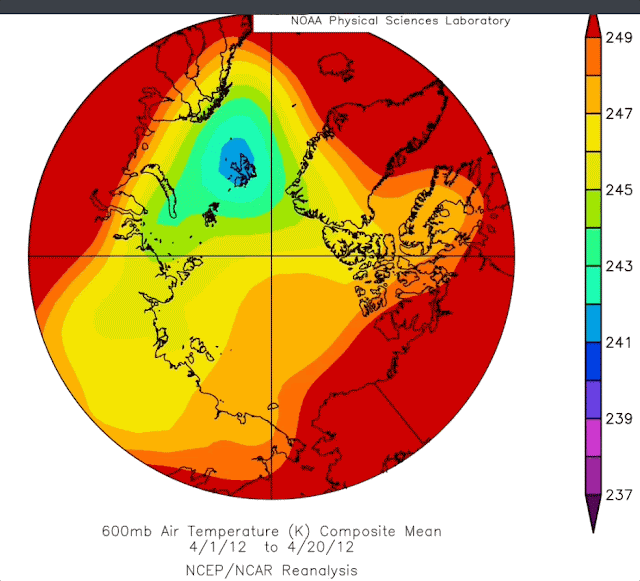~However spring 2016 was part of the warmest El-Nino in history
~While spring 2021 is part of the coldest La-Nina since
There is something out of the ordinary coming about:
NOAA ENSO Table, look carefully at 2015-16 , it was really the winter of 15-16 which was very warm, likewise EH2r vertical sun disks of Spring 2016 were amazingly expanded, in fact all time record number expanded. Followed, not surprisingly by 2015, 2010, all El-nino winters. Climate wise, the Arctic temperatures zoomed up in 2016, the gold standard warmest since 1998.
As a useful weighted temperature of the entire Troposphere comparison, 2016 May 3 date , can be compared with others, averaging out a week or or month would blur the image so much, it would be difficult to judge the extent of warming. Any ways, 2012 was end of a very long La-Nina starting in summer 2010. Hence we see a marked ENSO footprint. The Polar Vortex was of a different nature in 2012, consolidated, less broken, as if something more frozen just happened.... Of course 2012 is the year when Arctic sea ice minima was lowest to this date.
2016 vs 19, both springs had a winter El-Nino,, both had broken May 3 P.V..
Of which its internal vortices unleashed their own regional climates.
A neutral look, Sprig 2020 came after a neutral ENSO period, the Polar Vortex was more reformed, much colder than 2016. But all is not well, the broken up aspect of the P.V.. perimeter persists. Since after 2016, spring time vertical sun disk diameters reflected the consolidated coldest vortice hanging about the Canadian Arctic Archipelago.
Very strange, 2021 May 3, quite similar to 2016, in warmed temperatures and configuration. Yet
as the ENSO table demonstrates, the ENSO's are polar opposites, 16 followed the back end of El-Nino and 21 back end La-Nina. A significant Canadian Archipelago vortice is still important in 21, but not as strong as previous years since 2016. While comparing with 2012, with very similar ENSO, 2021 is warmer than 12, refigured like 16, as if current La-Nina had no effect on the Arctic system. The only reason this can happen, warmer Oceans ultimately affecting sea ice, if thinner, the heat emanating from a huge area would erase the Nina effects. The warmer Northern Oceans had something to do with tis as well. WD May 9, 2021
































